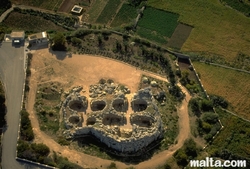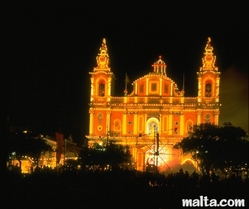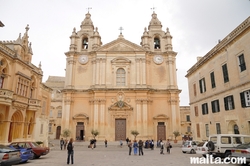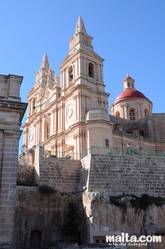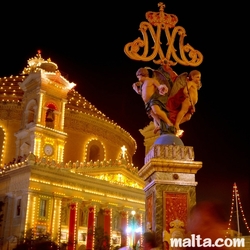Religion in Malta explained
Religion is an important feature in the Maltese culture
The main religion in Malta is Roman Catholicism, in fact, most Maltese claim to be Catholic and participate in Catholic religious services. The Constitution of Malta also establishes Catholicism as the state religion, however freedom of religion is guaranteed as a constitutional right and is generally respected. There is evidence of increasing secularisation and minority religions are growing as further ethnic groups settle down on the island.
Malta has three patron saints: St Paul, St Publius and St Agatha. However, both the feast of the Assumption of Mary (15 August) and the feast of Our Lady of Victories (8 September) are also widely celebrated as they commemorate important dates in the Maltese history.
History of religion in Malta
Religion has dominated the Maltese history and landscape ever since the first people came to the islands, something that can still be witnessed today. Ever since Stone Age farmers settled in Malta, they started looking at ways of how to show respect and thank their gods. As early as 3000BC, local farmers worshipped fertility figures (Mother goddesses) of unusually large proportions, such as the Venus of Willendorf.
They started building megalithic temples, where they could praise the goddess and sacrifice animals in her honour. Such temples, which are among the oldest structures in the world, can be found in Hagar Qim and Mnajdra in Malta, and Ġgantija in Gozo.
Time passed and during Roman times, exactly in 60 AD, St. Paul was shipwrecked on the islands, changing Malta’s religious history forever. Even if there is no direct evidence, it is said that St. Paul performed several miracles, amongst which was the healing of the governor’s father, Publius. St. Paul converted Publius to Christianity, who later on became the first bishop of Malta. By the third century AD almost all the inhabitants of Malta were Christians. The signs of an early Christian community can be seen in the Catacombs in Rabat.
Malta was conquered by the Arabs in 870 AD who ruled Malta for over 200 years. Amongst other influences in the language and customs, the Arabs brought along the Muslim religion, and large portions of the population converted to Islam. Today, the Muslim community is limited to a few thousands, mostly ethnics from North Africa and the Middle East. There is one mosque in Malta located in Paola.
Following the Arab ruling, the Normans landed in Malta, and the islands became part of the new Kingdom of Sicily, where the Catholic Church was re-instated. From then on, the Maltese started building small chapels all over the island to be able to pray and praise God.
Religion in Malta today
Malta remains a very devout nation with large percentages of the population attend church celebrations on a regular basis. Religion is a central theme of public discussion, especially when it comes to attitudes related to marriage, divorce, abortion, IVF and other matters of morality. From a very young age, children are taught religion at school, and encouraged to attend MUSEUM classes in the evening to prepare them for the Holy Communion and the Confirmation. Several adults form part of church groups or prayer groups, attending regular meetings to read the bible and pray for those in need.
It is said that there are around 365 churches in the Maltese Islands; or one church for every day of the year. Every town has its parish church as the focal point and a main source of civic pride. This pride is beautifully manifested during festas; celebrating the day of the patron saint of each parish with marching bands, processions, fireworks and other festivities. Churches in Malta are considered to be great works of art, both in terms of architecture as well as their embellished intererior adorned with paintings, sculptures and luxurious artefacts.
